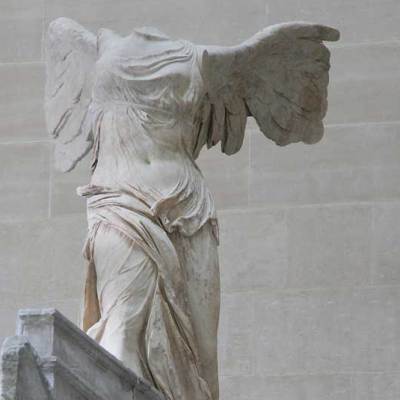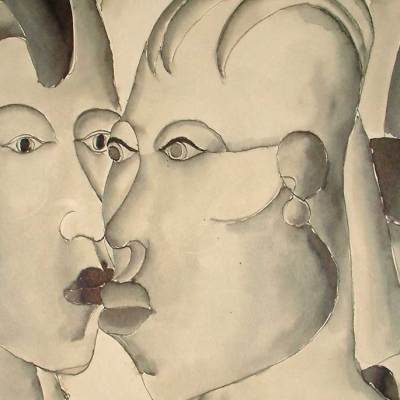The Cantor Arts Center is celebrating the arrival of Lucifer on campus (or at least, Jackson Pollock’s painting of the same name) with an exhibition looking at the devil’s changing face in art. Bernard Barryte tells us more.
Click here for a gallery of highlights…
Can you tell us a bit about the exhibition?
The exhibition surveys the representation of the Devil from the 16th through the 20th century, tracing his evolution from the bestial enemy of mankind and Christ in the earlier period, to his perception by the Romantics as a sort of noble rebel against patriarchal authority, to an insinuating dandy, to his virtual absence in the 20th century (in all but advertising and entertainment) as people increasingly recognised that we create our own hell on earth.
There is also a section devoted to Last Judgments and the sins that earn mankind a place in Hell. While many artists exercised their own imaginations, the exhibition also demonstrates how others were inspired by literary sources, most importantly Dante’s Inferno, Milton’s Paradise Lost, and Goethe’s Faust. There is also a section devoted to the representations of the classical underworld, where the focus is on villains such as Tantalus and Ixion and their torments.
What makes this a distinctive show?
I’m unaware of other recent exhibitions that have addressed the subject. I think the quality and variety of the objects are fundamental to whatever success any exhibition may have. This exhibition contains many fascinating images that will, I believe, compel visitors to look closely. That it takes a broad and perennially fascinating subject – evil itself – and suggests how it was personified and then reinterpreted over time has an inherent appeal in a world where the majority suffer, and that is riddled with evil in so many forms: greed, apathy, fanaticism, narcissism, etc.
How did you come to curate this exhibition?
When I learned that a highlight of the Anderson Collection is Jackson Pollock’s Lucifer, I quipped that since we have Rodin’s Gates of Hell we should do an exhibition on the Devil to celebrate the arrival of this renowned painting. I was then encouraged to develop this ‘one-liner’ into an exhibition.
What is likely to be the highlight of the exhibition?
I think that with more than 40 objects, people will find their own favourites. My personal favourite is a print that after half a millennium still baffles scholars and that is almost unique for its time: The Carcass, which is now generally attributed to Agostino Musi, known as Agostino Veneziano.
And what’s been the most exciting personal discovery for you?
Learning about how the Devil was ‘constructed’ over time and how his character, or our understanding of him, has evolved in relation to social and intellectual changes over the centuries. In terms of discoveries, per se, I suppose what was most surprising to me was how little is actually said about Satan in the Bible and how loomingly important he became over the centuries.
What’s the greatest challenge you’ve faced in preparing this exhibition?
As with almost every exhibition, the greatest challenge is time. There is never enough; one always wants to do further research.
How are you using the gallery space? What challenges will the hang/installation pose?
There are no real challenges in the installation as such. Since the gallery was designated early on I was able to design the exhibition to more or less fit the space. My own inclination is to show more – to give visitors more to look at on the assumption that they can always look at less, if they so choose – so naturally I probably include more than some might feel the space can comfortably accommodate. The result is a rather dense installation, but not so dense, I trust, as to be off-putting.
Which other works would you have liked to have included?
There are so many great works depicting the Devil, his minions, and his works, but I suppose for my dream exhibition I would have loved to include a dazzling Symbolist painting, Jean Delville’s The Treasures of Satan (1895; Brussels, Musées Royaux des Beaux Arts). There is also a great fountain sculpture of The Fall of Lucifer by Ricardo Bellver (1845–1924) in the Buen Retiro Park, Madrid, which would have been exciting to include.
‘Sympathy for the Devil: Satan, Sin, and the Underworld’ is at the Cantor Arts Center, Stanford University, from 20 August–1 December.
The Anderson Collection is a donation to Stanford of post-war paintings and sculpture that will be shown in its own gallery adjacent to the Cantor Arts Center.




